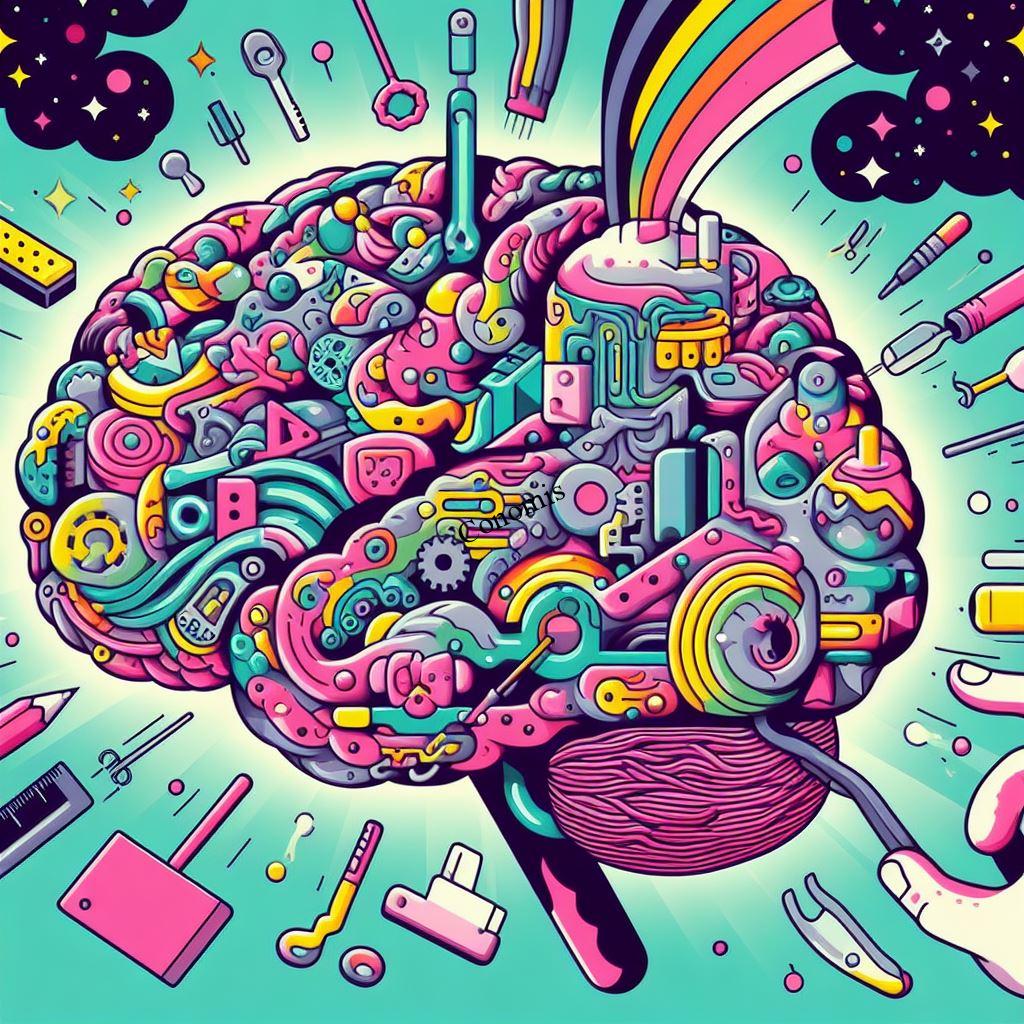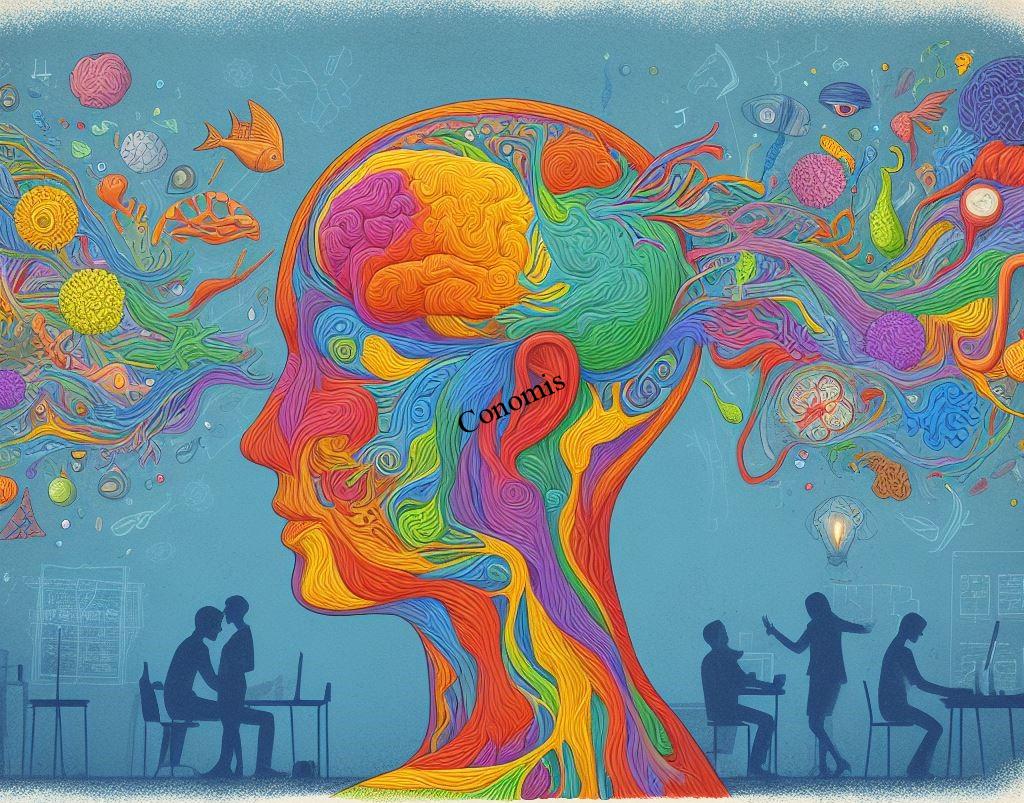Table of Contents
Introduction
Ever paused to think about how you picked up that new hobby or adjusted to a sudden change in your life? It’s quite a marvel, isn’t it? At the heart of these abilities is a concept called “neural plasticity.” Now, if you’re wondering what that fancy term means, don’t worry. We’re about to embark on a journey to understand it together.
Neural plasticity is like the brain’s superpower. Imagine your brain as this vast, bustling city with numerous roads and pathways. Every time you learn something new or adapt to a different situation, it’s like constructing a new road or enhancing an existing one in this city. This ability of the brain to change and adapt is what we refer to as neural plasticity.
Now, why is neural plasticity so crucial? Think about it. From the moment we’re born, we’re constantly learning and adapting. As babies, we learn to recognize faces, pick up languages, and even master the art of walking. As we grow older, we might learn to ride a bike, play a musical instrument, or adapt to a new job. All these are possible because of neural plasticity. It’s the brain’s way of ensuring we can face new challenges and thrive in ever-changing environments.

But neural plasticity isn’t just about learning new skills. It’s also about resilience. Have you heard stories of people recovering from injuries and relearning basic skills? That’s neural plasticity at work again. When one part of the brain gets injured, another part can step in to help, thanks to the adaptability provided by neural plasticity.
In today’s rapidly changing world, understanding neural plasticity is more important than ever. With technology evolving at breakneck speeds and our lifestyles undergoing significant shifts, our brains are continuously at work, adapting and reconfiguring. And guess what’s aiding this process? Yes, you got it right – neural plasticity!
To sum it up, neural plasticity is like the unsung hero of our brains. It’s the force behind our ability to learn, adapt, and even recover. So, the next time you find yourself marveling at how quickly you picked up a new skill or adjusted to a change, take a moment to appreciate the wonders of neural plasticity. It’s the silent, powerful force that ensures we keep evolving, learning, and growing throughout our lives.
Historical Perspective
Have you ever heard old tales or myths where people believed the Earth was flat or that the sun revolved around our planet? Just like these misconceptions, there was a time when folks thought our brains were set in stone, never changing once we reached adulthood. They viewed it as a static organ, much like a machine with fixed parts. But, oh boy, were they in for a surprise!
As time went on and science began to evolve, curious minds started to question these age-old beliefs. They began to poke and prod, trying to understand the mysteries of the human brain. And guess what they found? The brain wasn’t this unchanging, rigid organ they once thought it was. Instead, it was dynamic, adaptable, and ever-evolving. It was like discovering a whole new world within our heads!
One of the most groundbreaking realizations was when scientists noticed something extraordinary, especially in people who had suffered brain injuries. They observed that even if a part of the brain got damaged, other parts could step in and take over its functions. It was as if the brain had its own repair mechanism, rearranging itself to cope with the damage. This incredible ability to reorganize and adapt was what they termed “neural plasticity.”

Now, you might be wondering, why is this discovery of neural plasticity so significant? Well, it changed everything! Before this, if someone had a brain injury, the common belief was that the damage was permanent. But with the understanding of neural plasticity, hope emerged. It meant that with the right interventions and therapies, there was potential for recovery. It was like finding out that the old, worn-out machine could actually repair and upgrade itself!
This shift in understanding didn’t just impact medical treatments. It revolutionized how we viewed learning, growth, and development. If the brain could change and adapt, it meant we could continue to learn and evolve throughout our lives. The concept of neural plasticity gave birth to a more hopeful and dynamic view of human potential.
In conclusion, the journey from believing the brain was a static organ to understanding the wonders of neural plasticity is nothing short of fascinating. It’s a testament to human curiosity and the ever-evolving nature of science. And as we continue to learn more about neural plasticity, one thing’s for sure: our brains are far more incredible and adaptable than we ever imagined!
The Science Behind Neural Plasticity
Imagine your brain as a bustling city. The streets and highways are like neural pathways, helping information travel from one part to another. Now, what if I told you that this city is constantly under construction, building new roads and sometimes even closing old ones? This ever-changing landscape of the brain is what we call “neural plasticity.”
So, what’s the big deal about neural plasticity? Well, it’s the brain’s magical ability to reshape itself. Just like a city that builds new roads or renovates old ones to handle more traffic or connect different areas, our brain forms new connections or strengthens existing ones based on our experiences. It’s like the brain’s way of ensuring it’s always up-to-date and efficient.
There are two main ways our brain does this. First, there’s “structural plasticity.” Think of this as the physical construction work in our brain-city. It’s where the brain changes its actual structure, building new pathways or removing ones that are no longer needed. Then, there’s “functional plasticity.” This is more about the tasks or jobs that different parts of the brain handle. If one part of the brain is out of action (maybe due to an injury), another part might step in to take over its tasks. It’s like when a main road in a city is closed, and traffic is redirected to another route.

Now, here’s where it gets super interesting. The brain operates on a kind of reward system. When we learn something new or do something repeatedly, it’s like telling the brain, “Hey, this is important!” In response, the brain strengthens the pathways associated with that activity. It’s like adding more lanes to a busy highway to handle more traffic. But what about the roads or pathways we don’t use anymore? Well, the brain has a policy for that too, often referred to as “use it or lose it.” If a pathway isn’t used frequently, the brain might decide it’s not that important and will weaken or remove it. It’s a bit like closing down a rarely-used road.
In essence, neural plasticity is the brain’s way of staying efficient and relevant. It ensures that we’re always ready to learn, adapt, and grow. Whether it’s picking up a new hobby, learning a new language, or even recovering from an injury, neural plasticity is at the heart of it all. It’s a testament to just how incredible and adaptable our brains truly are. So, the next time you’re learning something new or facing a challenge, remember: thanks to neural plasticity, your brain is right there with you, adapting and evolving every step of the way!
Factors Influencing Neural Plasticity
Imagine your brain as a garden. Some plants grow faster, some need more sunlight, while others thrive in the shade. Just like these plants, our brain’s ability to change and adapt – what we call “neural plasticity” – can be influenced by various factors. Let’s explore what makes our brain-garden flourish.
First up, age. Picture a young, sprouting plant. It’s flexible, grows quickly, and adapts to its surroundings. Similarly, younger brains are like these sprouts, bursting with potential and adaptability. They’re in a constant state of growth, soaking up information like a sponge. This high level of neural plasticity in younger brains is why kids can pick up new languages or skills seemingly overnight!
But wait, before you think, “Oh, I’m past my prime,” hold on a second! While it’s true that neural plasticity is more pronounced in younger brains, it doesn’t mean the garden of an adult brain is barren. Far from it! Adult brains can and do benefit from neural plasticity. Think of them as mature plants. They might not grow as rapidly, but they’re sturdy, resilient, and can still sprout new branches and leaves. So, whether you’re 20 or 60, your brain has the potential to adapt and grow.
Now, let’s talk about experience. Just as plants might grow towards a source of light, our brains develop based on our experiences. Picking up a guitar for the first time, trying your hand at painting, or diving into a new language – these experiences nurture our brain-garden. They introduce new stimuli, encouraging the brain to form fresh connections and pathways. It’s like planting new seeds or adding a splash of color to our garden.

Lastly, the environment plays a pivotal role. A plant placed in a vibrant, diverse garden will likely flourish more than one in a dull, monotonous setting. Similarly, exposing our brains to varied and stimulating environments boosts neural plasticity. Traveling, meeting new people, or even just changing up your daily routine can provide the brain with the novelty it craves. It’s like giving your garden a mix of sunlight, shade, and the perfect amount of water.
In conclusion, while factors like age, experience, and environment influence neural plasticity, the key takeaway is this: our brains, regardless of age, have an incredible capacity to adapt and change. So, whether you’re thinking of learning a new skill or just want to keep your brain sharp, remember that thanks to neural plasticity, your brain is always ready to grow and flourish!
Benefits of Neural Plasticity
Imagine having a super-flexible tool in your toolkit, one that can change shape and function based on what you need. Sounds pretty handy, right? Well, that’s essentially what our brains are like, thanks to the magic of neural plasticity. This incredible feature of our brains offers a host of benefits that enrich our lives in countless ways. Let’s dive into some of these perks.
First and foremost, think about all the things you’ve learned over the years. From tying your shoelaces as a kid to mastering a complicated recipe as an adult, your brain has been at the forefront, adapting and evolving. This ability to learn and remember is a direct gift from neural plasticity. Every time you learn something new, your brain is like a diligent sculptor, chiseling away and refining its structure to store that knowledge. So, whether you’re picking up a new hobby or revisiting an old passion, neural plasticity ensures your brain is always ready to support you.
But the wonders of neural plasticity don’t stop at just learning and memory. Consider its role in recovery. Life can sometimes throw curveballs, like accidents that result in brain injuries. In such challenging times, neural plasticity comes to the rescue. If one part of the brain gets injured, it’s not the end of the road. Another part can step in, adapt, and take over the functions of the damaged area. It’s like having a backup system in place, ensuring that even in adversity, there’s hope for recovery and a return to normalcy.

Lastly, let’s talk about adaptability. Our world is ever-changing, filled with new experiences, environments, and challenges. Thanks to neural plasticity, we’re not just passive observers in this dynamic world. We actively adapt and thrive. When faced with a new environment or challenge, our brain flexes its neural plasticity muscles, ensuring we can navigate these changes successfully. It’s like having a built-in GPS that constantly updates itself based on the terrain, ensuring we’re always on the right path.
In conclusion, the benefits of neural plasticity are vast and varied. From enhancing our learning and memory to aiding in recovery and ensuring adaptability, it truly is one of the brain’s most remarkable features. So, the next time you’re faced with a challenge or embarking on a new adventure, take a moment to appreciate the wonders of neural plasticity. It’s the silent powerhouse ensuring you’re equipped to handle whatever comes your way!
Neural Plasticity in the Modern World
Picture this: a few decades ago, our daily dose of information came from newspapers, radio broadcasts, and face-to-face chats with friends or neighbors. Fast forward to today, and it’s a whole different ball game. We’re living in a digital age, where our smartphones buzz with notifications, our inboxes are flooded with emails, and social media platforms keep us updated every second. It’s like we’ve gone from sipping information through a straw to drinking from a fire hose!
Now, amidst this information deluge, our brains are working overtime. And guess what’s helping us navigate this modern world? That’s right – neural plasticity. This incredible ability of our brains to adapt and reorganize is more crucial now than ever. With the constant influx of new information and the rapid pace of technological advancements, neural plasticity ensures our brains stay sharp, flexible, and ready to tackle the challenges of the digital age.
One of the most evident impacts of technology on our brains is how we process information. The digital age demands that we sift through vast amounts of data, discerning what’s essential and what’s not. Thanks to neural plasticity, our brains are evolving to handle this demand efficiently. It’s like our brain is continuously updating its software to ensure it runs smoothly in the modern world.

But it’s not just about processing information. Continuous learning has become the norm. Whether it’s taking an online course, attending workshops, or just indulging in personal endeavors like reading or crafting, our brains are always on the go. And every time we learn something new or challenge ourselves, we’re tapping into the power of neural plasticity. It ensures that our brains remain agile, much like a seasoned athlete who trains regularly to stay in top form.
In essence, the modern world, with all its complexities and rapid changes, is like a gym for our brains. And neural plasticity is our personal trainer, guiding us, pushing our limits, and ensuring we’re always in the best shape to handle whatever comes our way. So, as we navigate the digital age, it’s comforting to know that our brains, backed by the power of neural plasticity, are more than equipped to thrive.
In conclusion, while the modern world presents its set of challenges, it’s also an opportunity. An opportunity to learn, grow, and adapt. And with neural plasticity by our side, we’re not just surviving in this digital age; we’re thriving!
The Future of Neural Plasticity
Imagine a time when upgrading your brain’s capabilities is as common as updating the apps on your smartphone. Sounds like science fiction, right? But with the strides we’re making in understanding neural plasticity, this might not be as far-fetched as it seems.
Neural plasticity has already shown us that our brains are not static entities, forever locked in their ways. Instead, they’re dynamic, adaptable, and ever-evolving. And as we delve deeper into the mysteries of the brain, the horizon of what’s possible with neural plasticity keeps expanding.
So, what could the future of neural plasticity look like? For starters, as our understanding deepens, we might discover techniques to enhance the brain’s adaptability even further. Think about it. What if there were exercises, much like a gym workout, but for the brain? These exercises could tap into neural plasticity, ensuring our brains remain agile and sharp, regardless of age. The idea of “brain gyms” where people engage in activities specifically designed to boost neural plasticity might become a reality.
Moreover, the implications for learning are enormous. If we can harness the full potential of neural plasticity, we might be able to accelerate the learning process. Imagine mastering a new language in weeks instead of years or picking up a musical instrument and playing a tune in just a few sessions. With optimized neural plasticity, the way we approach education and skill acquisition could undergo a revolutionary change.

But it’s not just about learning. The therapeutic potential of understanding neural plasticity is vast. For those recovering from brain injuries or neurological disorders, treatments tapping into neural plasticity could offer hope. Tailored therapies that stimulate the brain’s adaptability might make recovery faster and more efficient, giving countless individuals a chance at a better quality of life.
In essence, the future of neural plasticity is brimming with possibilities. As we stand on the cusp of these exciting advancements, it’s exhilarating to think about the potential that lies ahead. Our brains, with their incredible adaptability, hold the key to numerous breakthroughs that can transform our lives.
In conclusion, while we’ve already uncovered so much about neural plasticity, it feels like we’re just scratching the surface. The journey ahead promises discoveries that could reshape our understanding of the brain and its potential. And as we venture into this future, one thing is clear: with neural plasticity as our guide, the possibilities are truly endless!
Conclusion
Have you ever marveled at the beauty of a chameleon, effortlessly changing its colors to blend with its surroundings? Or watched in awe as a river carves a new path through a landscape, adapting to the terrain? Nature is filled with examples of adaptability, and one of the most remarkable examples can be found right within us. Yes, I’m talking about our brains and the magic of neural plasticity.
Neural plasticity is like our brain’s superpower. It’s the secret sauce that allows our brains to reshape, relearn, and rejuvenate. Think of all the times you’ve faced challenges, learned new skills, or adapted to unexpected changes in your life. Behind all these experiences, silently working in the background, is neural plasticity.
Looking back through history, our understanding of the brain and neural plasticity has come a long way. Ancient civilizations believed the brain to be a fixed organ, unchanging and set in its ways. But as time progressed and science advanced, we discovered the truth. Our brains are not static; they’re dynamic and ever-evolving. This revelation, this understanding of neural plasticity, has been nothing short of revolutionary. It’s reshaped how we view learning, growth, and even recovery from injuries.

But it’s not just about the past or the present. The future of neural plasticity holds immense promise. As we continue to delve deeper into the intricacies of the brain, we’re uncovering ways to harness the full potential of neural plasticity. Imagine a world where we can optimize our brain’s adaptability, making us quicker learners, more resilient individuals, and overall more in tune with the world around us. The possibilities, thanks to neural plasticity, are boundless.
For society at large, understanding and embracing neural plasticity can lead to breakthroughs in education, healthcare, and even technology. It’s a key that can unlock a brighter, more adaptable future for all of us.
So, as we wrap up this exploration of neural plasticity, here’s a parting thought: The next time you find yourself at a crossroads, facing a challenge, or embarking on a new adventure, take a moment to appreciate your brain. Thanks to neural plasticity, it’s right there with you, ready to adapt, learn, and evolve. It’s a reminder that no matter what life throws our way, we have the innate ability to adapt and thrive.
FAQs
What is neural plasticity?
It’s the brain’s ability to reorganize itself by forming new neural connections.
Can adults benefit from neural plasticity?
Absolutely! While younger brains tend to be more plastic, adults can still enhance their brain’s adaptability through learning and experiences.
How does technology impact neural plasticity?
The digital age requires our brains to process vast amounts of information, leading to continuous adaptation and evolution.
What are the benefits of neural plasticity?
It aids in learning, memory, recovery from brain injuries, and adaptation to new environments.
Can we enhance our brain’s adaptability in the future?
As we continue to understand the brain better, there’s potential to optimize its adaptability, making learning and recovery more efficient.
You Can Also Read
https://en.wikipedia.org/wiki/Neuroplasticity
https://news.mit.edu/2018/mit-scientists-discover-fundamental-rule-of-brain-plasticity-0622
Conomis Thoughts
![]() Copyright 2023 CONOMIS
Copyright 2023 CONOMIS

